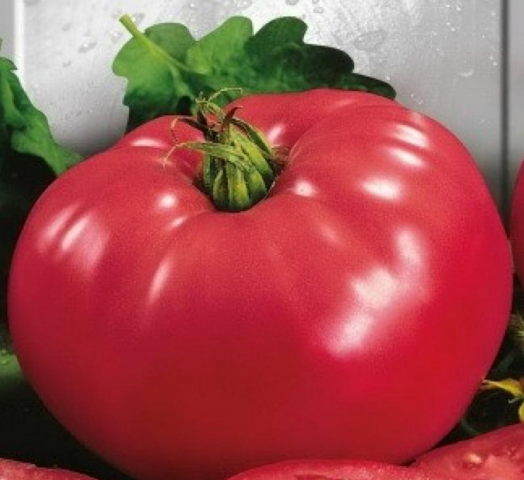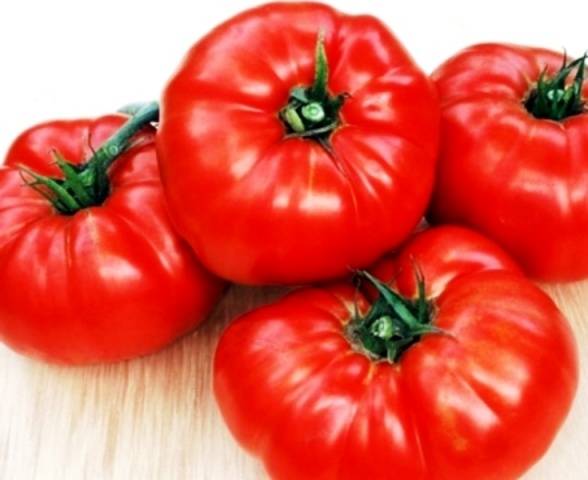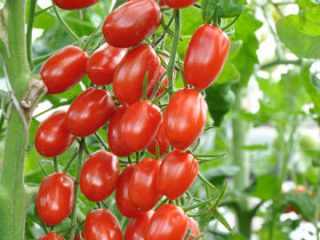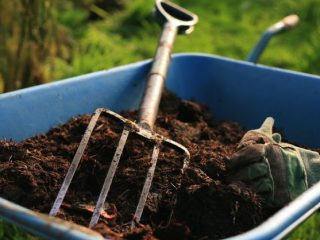Content
The Bear's Paw tomato variety got its name due to the unusual shape of the fruit. Its origin is precisely unknown. It is believed that the variety was bred by amateur breeders.
Below are reviews, photos, and productivity of Bear's Paw tomatoes. The variety is recommended for regions with temperate and warm climates. Can be grown in colder regions when planted in a greenhouse.
Characteristics of the variety
The appearance of the Bear Paw variety bush has a number of features:
- height of tomatoes – 2 m;
- bush of indeterminate type;
- tops are dark green;
- 3-4 tomatoes ripen per bunch.
The characteristics and description of the Bear Paw tomato variety are as follows:
- mid-early maturation;
- high productivity;
- flat-round tomatoes;
- there is pronounced ribbing near the stalk;
- weight of tomatoes – 800 g;
- When ripe, the color of tomatoes changes from green to dark red;
- glossy skin;
- juicy fleshy pulp;
- good tomato taste;
- there is sourness;
- a large number of seed chambers;
- resistance to drought and major diseases.
Productivity of the variety
Up to 30 kg of fruits are harvested from one tomato bush of this variety.Due to this, it is considered high-yielding. Tomatoes ripen gradually throughout the season.
The characteristics and description of the Bear's Paw tomato variety allow it to be used fresh, added to soups, salads, sauces and main courses. In home canning, puree, juice and paste are prepared from these tomatoes.
The collected fruits can be stored for a long time or transported over long distances. If you pick them green, they will ripen quickly in room conditions.
Boarding order
The Bear's Paw tomato is suitable for growing in greenhouses and open areas. In cold climates, as well as to obtain a large harvest, it is recommended to plant tomatoes in closed ground. Soil for tomatoes is prepared by digging and adding compost.
Obtaining seedlings
Tomatoes are grown using the seedling method. Seeds are planted in early March. It is recommended to prepare the soil for planting in advance by mixing soil and humus in equal proportions. River sand and peat are added to heavy soil.
The soil is subjected to heat treatment for 10-15 minutes. Then it is left for 2 weeks so that bacteria beneficial to tomatoes have time to multiply.
A day before planting, tomato seeds are soaked in warm water. In this way, seed germination is increased.
The prepared soil is placed in shallow containers 15 cm high. Furrows 1 cm deep should be made on its surface. Tomato seeds are placed in the soil in increments of 2 cm. The seed material is sprinkled with earth on top and watered.
For the first few days, the containers are kept in the dark. It is recommended to cover them with film or glass.The higher the ambient temperature, the faster the first tomato sprouts will appear. The best germination is observed at a temperature of 25-30 degrees.
When the tomato seedlings begin to appear, the containers are transferred to the windowsill. Plantings are provided with illumination for 12 hours. Warm, settled water is used to water the tomatoes.
Transplanting into a greenhouse
According to reviews and photos, the Bear's Paw tomato gives maximum yield when grown in greenhouses. This planting method is also used in cold regions.
It is necessary to replant seedlings at the age of one and a half to two months. By this time, its height will reach 25 cm and 5-6 full leaves will form.
The soil in the greenhouse is prepared in the autumn, when it is dug up and the remains of the previous crop are removed. It is not recommended to grow tomatoes in one place for two years in a row. The top layer of soil in the heifer with tomatoes also needs to be replaced to avoid the spread of diseases and insects in the spring.
The soil must remain loose and have good permeability. Tall tomatoes are planted in holes with 60 cm between them.
Tomatoes are arranged in a checkerboard pattern. This simplifies the maintenance process, promotes the development of the root system and ventilation.
Growing in open ground
In open areas, Bear's Paw tomatoes are grown in the southern regions. Beds are prepared for them, which are dug up in the fall and fertilized with compost.
Tomatoes are not planted in places where peppers or eggplants previously grew. However, they can be planted after onions, garlic, cabbage, cucumbers, and representatives of the legume family.
Plants are placed in holes spaced at 60 cm intervals. If several rows are organized, then 70 cm are left between them.
An earthen ball with a tomato root system is placed in a hole, covered with soil and trampled down a little. Be sure to water the plants with warm water.
Features of care
Proper care will allow you to get a high yield of tomatoes and avoid problems with the spread of diseases and pests. The care process includes adding moisture and fertilizers, pinching and tying up the bush.
Watering tomatoes
The Bear's Paw tomato variety requires moderate watering. It is important to prevent the soil from drying out and forming a hard crust on its surface.
As reviews and photos of the Bear's Paw tomato show, excess moisture also negatively affects plants. As a result, their development slows down and fungal diseases are provoked.
After planting in a permanent place and abundant watering, the next application of moisture is postponed for a week. The water used must settle and warm up.
One tomato bush requires 3 liters of water. During the flowering period, add up to 5 liters of water, but the procedure is carried out no more than once a week. During fruiting, the intensity of watering is reduced to avoid cracking of the tomatoes.
Fertilizing plantings
The first feeding of tomatoes is done a week after transplanting the plants. You can use both minerals and folk remedies. There is a gap of 2 weeks between procedures.
Preference is given to fertilizers based on potassium or phosphorus.When watering, 30 g of superphosphate or potassium sulfate is dissolved in 10 liters of water. Phosphorus contributes to the development of tomatoes and the formation of a healthy root system. Potassium helps improve the taste of fruits.
During the flowering period, tomatoes are sprayed with boric acid (1 g of the substance is diluted in 1 liter of water). This feeding stimulates the formation of ovaries.
Bush formation
The Bearpaw tomato is formed into one or two stems. Lower leaves and side shoots must be removed. Stepping allows you to avoid excessive growth of green mass. You need to eliminate shoots growing from the leaf axil.
The variety in question is tall and therefore requires staking. A wooden or metal strip is used as a support. Tomatoes are tied at the top.
You can tie tomatoes to a support structure consisting of several supports. A wire is stretched between them, to which the plants are attached.
Reviews from gardeners
Conclusion
The Bear's Paw variety is considered unpretentious and versatile. It is grown for sale and for personal use. Plant care includes watering, fertilizing and bush formation. The variety is resistant to disease and adverse conditions.

















